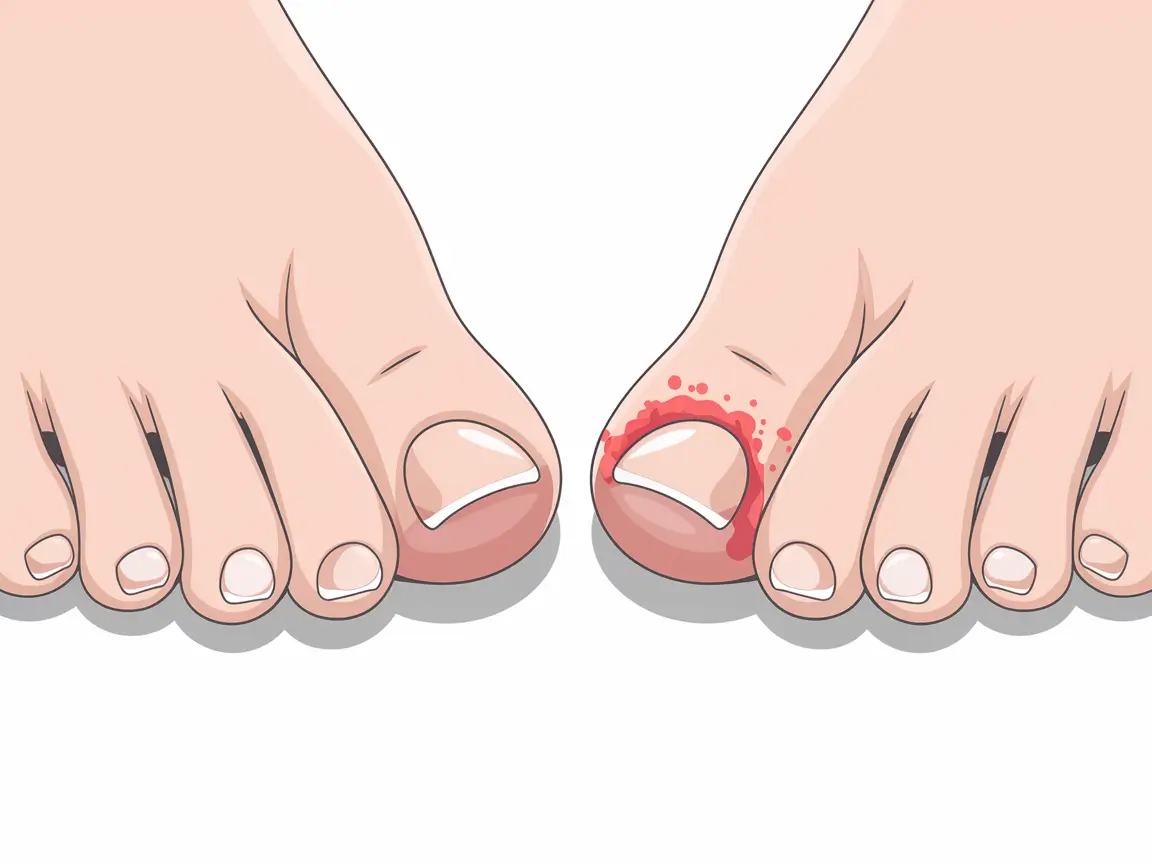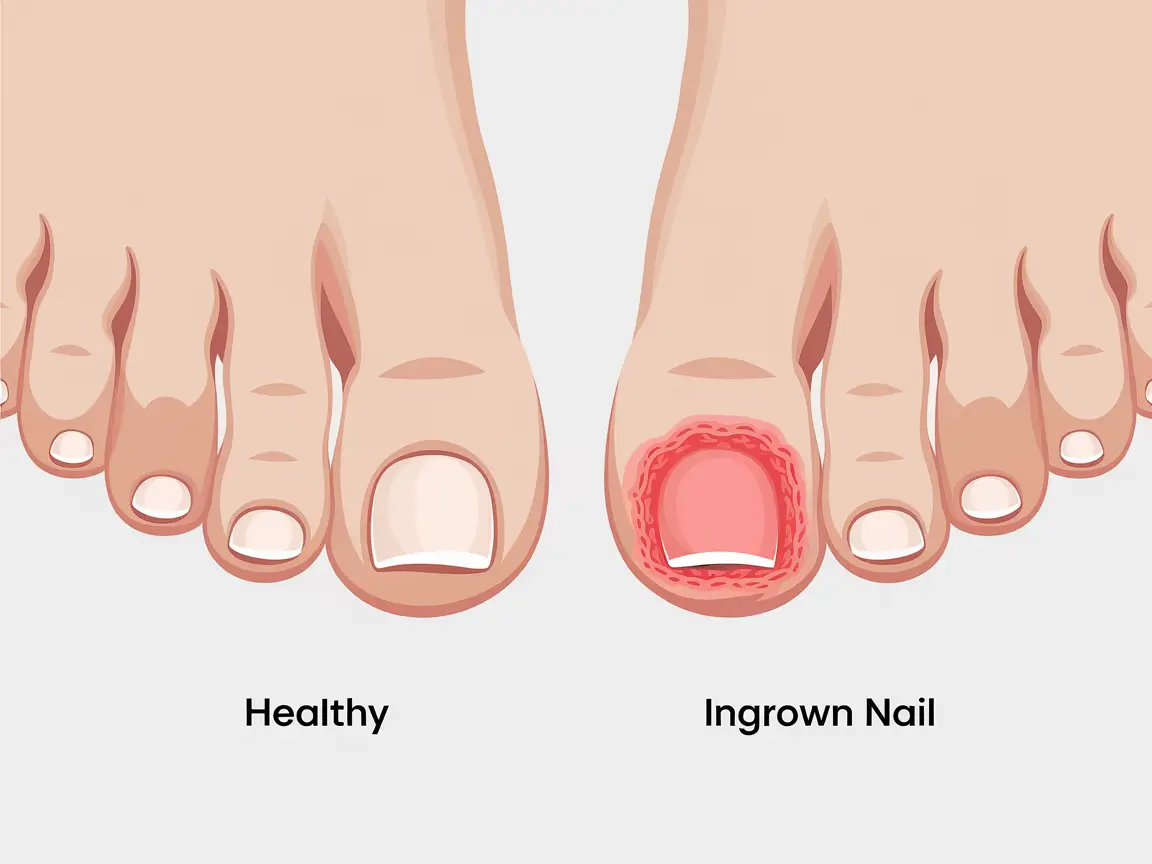ingrown nail
Living with an ingrown nail can be both painful and frustrating. Whether you’re dealing with this condition for the first time or seeking better solutions for recurring issues, this comprehensive guide will walk you through everything you need to know about treating and preventing ingrown nails. From at-home remedies to professional medical interventions, we’ll explore all aspects of ingrown nail care to help you find relief.
Understanding Ingrown Nail: Causes and Symptoms

An ingrown nail occurs when the edge of your nail grows into the surrounding skin instead of over it. This common condition can affect both fingers and toes, leading to pain, redness, and swelling. The most frequent causes include improper nail trimming, tight shoes, injury, or genetic predisposition to curved nails. Recognizing the early signs of an ingrown nail is crucial for preventing complications and ensuring effective treatment.
Ingrown Nail Treatment:
When dealing with an ingrown nail, you have several treatment options depending on the severity of your condition. For mild cases, home remedies can be effective:
- Warm water soaks (3-4 times daily)
- Gentle massage of the affected area
- Over-the-counter antibiotic ointments
- Proper nail trimming techniques
For more severe cases, professional medical intervention might be necessary. A healthcare provider can offer treatments ranging from minor procedures to complete nail removal in extreme cases.
Using an Ingrown Nail Clipper:
The right tools and techniques are essential for preventing and treating ingrown nails. When using an ingrown nail clipper:
- Choose a professional-grade clipper designed specifically for ingrown nails
- Cut straight across rather than curved
- Avoid cutting too short or down the sides
- Keep tools clean and sanitized
Remember: proper nail cutting technique is crucial for preventing future ingrown nail issues.
Cost to Remove Ingrown Nail:
The cost of ingrown nail treatment varies depending on the severity and chosen method:
- Home treatment supplies: $10-30
- Professional partial nail removal: $200-400
- Complete nail removal surgery: $500-1000
- Insurance coverage varies by provider and procedure type
Always consult with your healthcare provider about coverage options and payment plans if needed.
Identifying Nail Ingrown Infection:
Recognizing the signs of infection is crucial for proper treatment. Watch for:
- Increased pain and tenderness
- Redness extending beyond the immediate area
- Warm-to-touch skin
- Pus or drainage
- Fever in severe cases
If you notice any of these symptoms, seek medical attention immediately to prevent complications.
Best Way to Remove Ingrown Nail:
The most effective approach to treating an ingrown nail depends on your specific situation. However, these steps generally provide the best results:
- Early intervention when symptoms first appear
- Proper hygiene and wound care
- Professional assessment for severe cases
- Following post-treatment care instructions carefully
Taking action early can prevent more serious complications and reduce recovery time.
Prevention Tips for Long-Term Success
Preventing future ingrown nails is just as important as treating existing ones. Follow these guidelines:
- Trim nails straight across, never rounded
- Wear properly fitting shoes
- Keep feet clean and dry
- Avoid tight socks or hosiery
- Regular foot care and inspection
When to Seek Professional Help
Don’t hesitate to consult a healthcare provider if you experience:
- Severe pain that interferes with daily activities
- Signs of infection
- Recurring ingrown nails
- Underlying health conditions like diabetes
FAQ
How long does it take for an ingrown nail to heal? Recovery typically takes 2-4 weeks with proper treatment.
Can I prevent ingrown nails completely? While you can’t guarantee prevention, proper nail care significantly reduces risk.
Does insurance cover ingrown nail treatment? Most insurance plans cover medical treatment when deemed necessary.
What’s the difference between partial and complete nail removal? Partial removal addresses only the affected portion, while complete removal involves the entire nail.
How can I tell if my ingrown nail is infected? Look for increased pain, redness, warmth, and pus around the affected area.
Will my nail grow back normally after removal? In most cases, yes, though it may take 4-6 months to grow back completely.
Are certain people more prone to ingrown nails? Yes, factors like genetics, foot structure, and activity level can increase risk.
Can I treat an ingrown nail at home? Mild cases can be treated at home, but severe or infected cases require professional care.
How often should I check for signs of ingrown nails? Regular inspection during nail trimming (every 2-3 weeks) is recommended.
What’s the best way to trim nails to prevent ingrown nails? Cut straight across, keeping nails at moderate length and avoiding curved edges.
Take Action Today for Healthier Nails
Don’t let an ingrown nail impact your daily life. Whether you’re dealing with mild discomfort or seeking professional treatment, the right approach can make all the difference. Remember to monitor your symptoms closely and seek professional help when needed.
Ready to address your ingrown nail concerns? Schedule a consultation with a healthcare provider today to discuss your treatment options. Your comfort and health are worth the investment in proper care.
Remember: Early intervention and proper care are key to preventing complications and ensuring successful treatment of ingrown nails. Don’t wait until the problem becomes severe – take action today for healthier, pain-free nails tomorrow.
